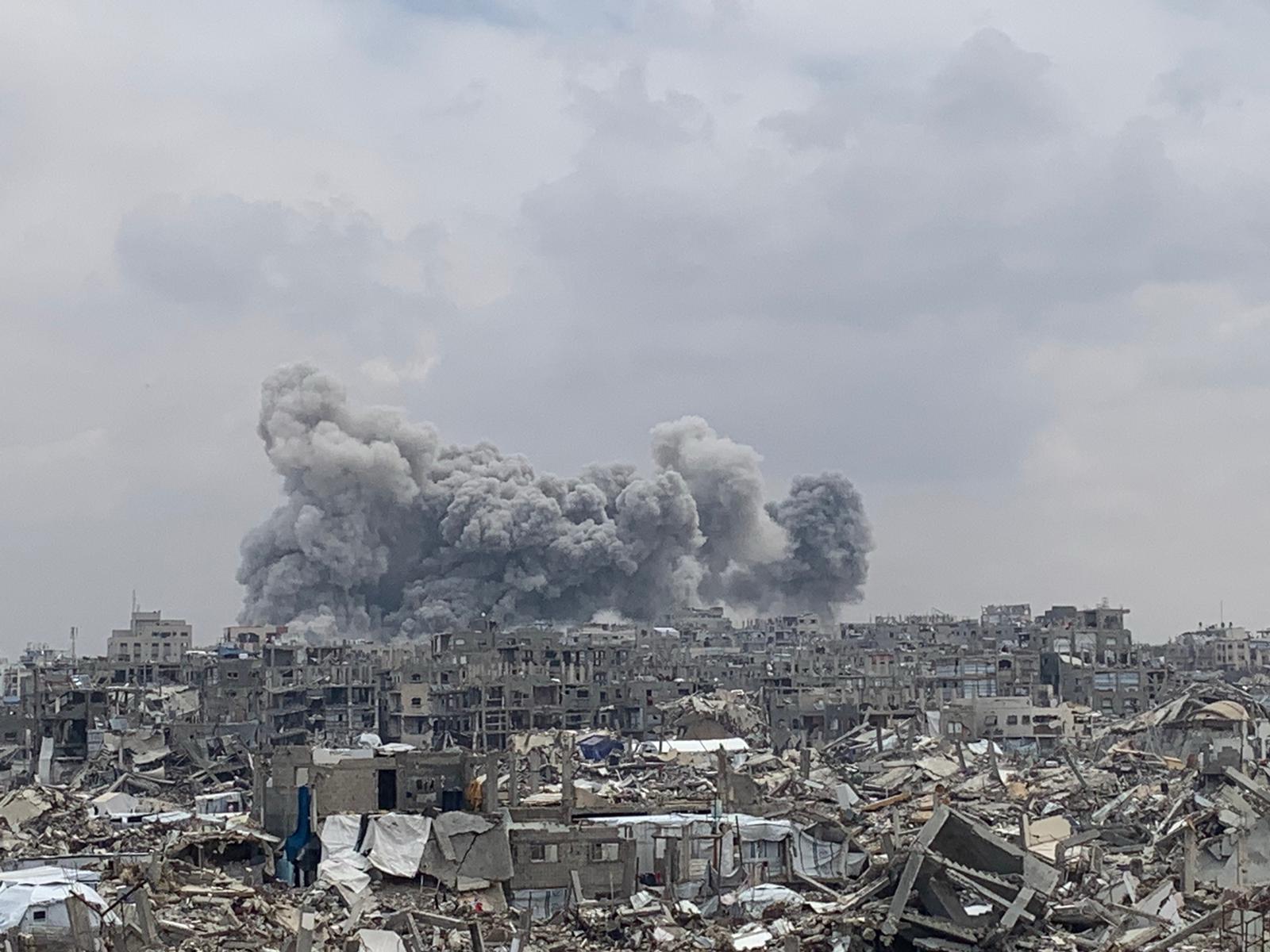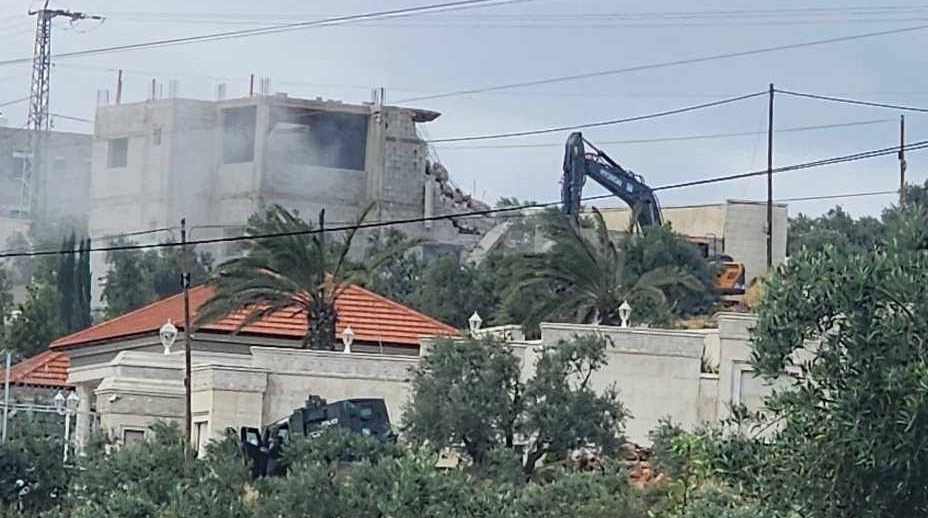RAMALLAH, September 30, 2018 (WAFA) - The Annual Report issued by the Palestine Monetary Authority (PMA) for the year 2017 stated that the Palestinian economy experienced slowdown in 2017, which PMA said it had previously anticipated, registering a growth rate of 3.1 percent compared to 4.7 percent last year.
Real Gross Domestic Product (GDP) in 2015 prices rose to approximately USD 13,686.4 million due to Gaza economic downturn, said the report.
The report said Gaza economy slipped again into an economic downturn after two successive years of acceleration registering a 0.3 percent drop compared to a 7.7 percent growth in the previous year.
This is mainly due to deterioration in public and private spending especially in the second half of the year. In the West Bank; on the other hand, the year was relatively quiet and the level of economic activity was normal and the transfer of clearance revenue took place on a regular basis; hence, civil servants’ salaries were paid on time, it said.
“Economic growth in the West Bank; therefore, continued to register medium growth rates and an acceleration of approximately 4.3 percent in 2017 compared to 3.0 percent in the previous year.”
The report said: An improvement in the economic activity was supposed to go along with the growth achieved in 2017 with impact on a number of the variables of the macroeconomy, albeit narrow, such as the case of income per capita and price levels, or contradictory to what had been anticipated, such as the case of unemployment.
Growth in income per capita was in line with the economic growth rates; however, it was ed since the population growth rate at 2.7 percent and the economic growth rate at 3.1 percent were very close. This meant that income kept its levels of the previous year at USD 2,923.4 due to an increase of approximately 2.0 percent in the West Bank to register 3,762.4 and a drop in Gaza Strip by approximately 4.4 percent to register USD 1,741.6.
Consumer price in Palestine slightly grew by 0.2 percent (compared to price deflation of approximately 0.2 percent in 2016) due to an international increase in the price of basic commodities and growth of prices in Israel. It is a well-known fact that inflation levels often vary between the West Bank and Gaza Strip as a result of varied political and economic factors. However, in 2017, the West Bank and Gaza Strip experienced low inflation rates at almost zero percent (- 0.01 percent) in the West Bank and a marginal increase of 0.1 percent in Gaza Strip. Inflation rate in Jerusalem; however, recorded around 2.2 percent.
Moreover, 2017 witnessed noticeable improvement in tax revenue and slight improvement in clearance revenue, but a drop in non-tax revenue and foreign grants and aid. These consequently led to a decline of public revenue and grants by approximately 5 percent compared to 2016 to register around NIS 15,982.5 million.
Actual public spending dropped by about 1.1 percent compared to the previous year, to register approximately NIS 14,601.8 million.
In conclusion, the developments in the two sides of public finance led to surplus in the aggregate balance after grants and aid (on cash basis) by approximately NIS 1,189.1 million, which was equivalent to 2.2 percent of the GDP compared to a surplus of NIS 1684.3 million in 2016 (an equivalent of 3.3 percent of the GDP). Change in the exchange rate of the dollar played key role in the increase of the government public debt (adjusted to U.S. dollars) by approximately 2.4 percent compared to the previous year to register approximately USD 2,543.1 million or an equivalent of 17.5 percent of the nominal GDP.
The report said that unemployment, especially in Gaza Strip, is among the key challenges of the Palestinian economy. Obviously, the realized growth rates were insufficient to absorb labor market newcomers and create an adequate jobs as required; consequently, they were incapable of decreasing unemployment rates and improving individuals’ living standards.
Unemployment rates in Palestine rose to approximately 27.7 percent despite a drop to 17.9 percent in the West Bank, due to a noticeable increase to 43.9 percent in Gaza Strip. Alternatively, Palestinian workers’ nominal daily wage rose by 4.6 percent in 2017 to register approximately NIS114.3. However, the ed price movements in 2017 brought real wages to their nominal level especially among [Palestinian] workers who work in the West Bank, in Israel, and in the settlements.
Inflation registered a near zero value. Real wages of [Palestinian] workers in the West Bank, Israel, and the settlements grew by 3.5 percent and 4.0 percent, respectively, which matched the growth in nominal wages. The ed inflation in Gaza Strip led to a slip in real wages by around 3.7 percent.
The current account in the balance of payments in 2017 registered a deficit of USD 1,563.7 million, which was an improvement of 19.5 percent compared to 2016. This deficit is around 10.8 percent of the GDP compared to 14.5 percent in 2016.
PMA said the main reason for the drop in the current account deficit is an approximate 29.1 percent increase in current transfers compared to 2016 and rise in the surplus in income transferred from abroad by around 5.0 percent despite the increased deficit in the trade balance of approximately 2.6 percent.
Financial and capital account (including reserve assets) registered a surplus of USD 1,395.2 million in 2017, which was an 18 percent drop compared to 2016 or 9.6 percent of the GDP compared to 12.7 percent in 2016. The drop in the surplus in this account was mainly due to the noticeable drop in capital transfers, which had dropped by 42.8 percent compared to 2016.
Alternatively, the Palestinian banking sector secured more achievements in 2017. PMA continued efforts to develop the supervisory and legal framework that regulated the banking system and supported such framework with different supervisory systems., said the report.
PMA also continued to strengthen its Arab, regional, and international relations in order to reinforce links between the Palestinian banking sector and its regional and international surroundings and to avert risks and concerns of the Palestinian banking sector in light of current situations.
Moreover, PMA continued its big efforts to strengthen financial inclusion, researches and preparation of specialized economic, banking, and financial reports. The outcome of these measures had their positive impact on the financial indicators of the Palestinian banking sector; hence, liquidity levels concretely improved where such improvement coincided with an increase in assets and strong public confidence in a safe and disciplined banking sector in line with the highest international standards.
The increasing public confidence in the security and stability of the banking system could be seen in an obvious increase in the size of deposits and change in the indicators of investing such deposits domestically rather than abroad; hence, credit portfolio grew and its quality improved.
The analysis of the financial data of the Palestinian banking sector at the end of 2017; therefore, showed an 11.6 percent increase in the total assets to USD 15,850.2 million. Direct credit facilities portfolio experienced an increase of approximately 16.8 percent to reach around USD 8,026.0 million, which was 50.6 percent of the total assets indicating more use of financial intermediary among surplus and deficit units in economy and creating more financing opportunities and contributing to the economic development process.
Customer deposits reached USD 13,117.8 million, which was an increase of 11.7 percent compared to 2016. Banks equity rose by 12.4 percent to USD 1,891.2 million.
Moreover, PMA continued its institutional building process and strengthening its capital in order to enhance its capacity to overcome the risks that it faced while carrying out its tasks, mandates, and responsibilities.
The PMA‘s equity grew by the end of 2017 by 7.6 percent compared to 2016 to USD 117.8 million due to increase in paid-up capital by 10.6 percent. The activities PMA conducted in 2017 secured a net profit of USD 8.3 million, which were transferred in full to the capital account, the report concluded.
T.R.













